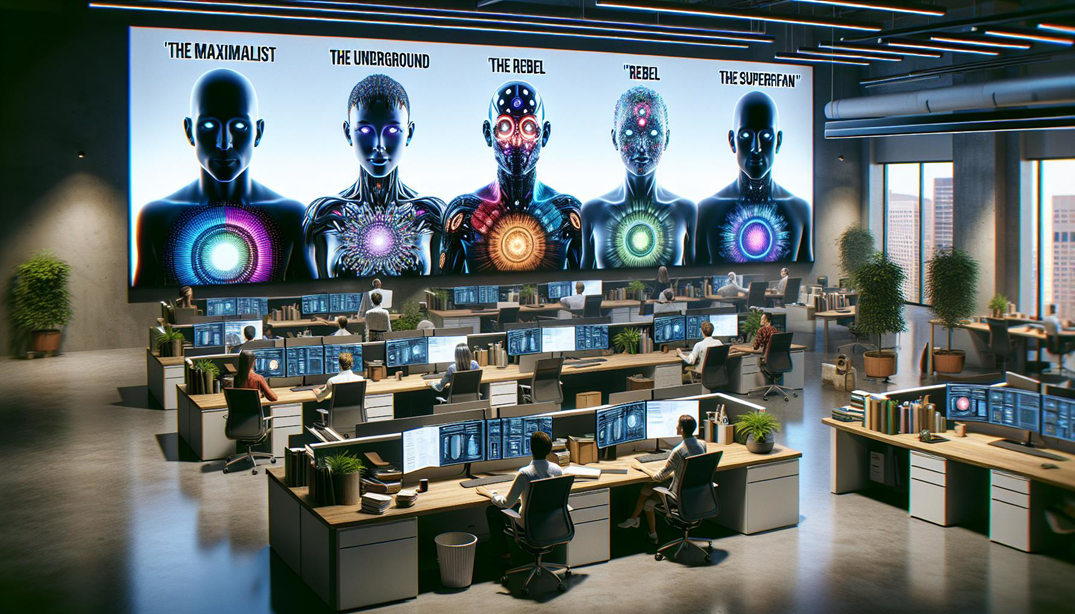The Emergence of AI in Business
Artificial intelligence (AI) has rapidly ascended to the forefront of business innovation, reshaping industries and altering the landscape of the modern workplace. As AI technologies become increasingly sophisticated, they offer businesses the potential to enhance efficiency, productivity, and decision-making processes. This technological evolution, however, has also left many office workers pondering their role in this new environment and questioning the frequency and extent of AI usage in their daily tasks.
A recent study conducted by Slack, a workplace communications platform, sheds light on the diverse attitudes of workers towards AI. Through in-depth interviews with 5,000 desktop workers, the study identified five distinct AI personalities: “the maximalist,” who frequently utilizes AI; “the underground,” who uses AI covertly; “the rebel,” who resists AI; “the superfan,” who is enthusiastic but inexperienced with AI; and “the observer,” who adopts a cautious, wait-and-see approach. Notably, only half of the respondents fell into the maximalist or underground categories, highlighting a challenge for businesses aiming to integrate AI into their operations seamlessly.
AI’s Impact on Workplace Safety and Health
The integration of AI in the workplace extends beyond productivity enhancements, offering significant implications for worker safety and health. AI applications can potentially improve safety by removing humans from hazardous situations, thus reducing the risk of stress, overwork, and injuries. Predictive analytics can identify conditions leading to fatigue or exposure to harmful substances, enabling earlier interventions. Additionally, AI can streamline safety workflows by automating repetitive tasks and enhancing training programs through virtual reality.
However, the introduction of AI also presents new hazards. Machine learning techniques can lead to unpredictable behavior and decision-making, while cybersecurity and privacy issues arise from increased data usage. Psychosocial hazards include changes in required skills, increased monitoring, and potential biases in algorithms. Physical risks, such as human-robot collisions, also exist. Effective hazard controls involve cybersecurity measures, transparent communication with workers, and limitations on collaborative robots.
AI’s Ethical and Employment Considerations
The ethical implications of AI in the workplace are a subject of ongoing debate. While AI can reduce biases in processes like hiring and enhance efficiency, concerns about algorithmic transparency and accountability persist. The potential for AI to perpetuate inequalities and lead to job losses is a pressing issue. Businesses must ensure fair and unbiased decision-making and address ethical challenges associated with AI deployment.
From an employment perspective, AI’s impact varies. While modern robotics have contributed to net employment growth, automation and AI adoption may lead to job displacement in the future. This is particularly true in regions like Central and Eastern Europe. Other digital technologies, such as platforms and big data, are predicted to have a more neutral impact on employment. Companies must navigate these changes thoughtfully to balance technological advancement with workforce stability.
The Future of AI in the Workplace
As AI continues to evolve, its role in the workplace will likely expand. The development of narrow or “weak” AI, which focuses on specific tasks, offers practical applications that businesses can leverage. However, the concept of “strong” or general AI, capable of performing any human task, remains a distant possibility. AI’s integration into various industries highlights its potential as a general-purpose technology, akin to electricity or computers.
High-profile AI applications, such as language translation, image recognition, and autonomous vehicles, demonstrate AI’s transformative power. However, many AI applications are so integrated into everyday use that they are no longer perceived as AI. As AI research progresses, traditional goals like reasoning, knowledge representation, and learning will continue to shape its development. The field’s long-term aim of achieving general intelligence underscores the ongoing journey of AI innovation.
Summary
- AI’s rise in business prompts questions about its usage and potential job replacement.
- Slack’s study identifies five AI personality types among workers, with only 50% embracing AI.
- AI offers safety benefits but introduces new hazards, requiring effective control measures.
- Ethical considerations and potential job losses are key concerns in AI’s workplace integration.
- Narrow AI offers practical applications, while general AI remains a future possibility.
